Brainstorms!
Miller School researchers capture lightning in the laboratory, and their groundbreaking discoveries bring new treatments and cures
By Bob Woods
Photo-illustrations by István Szugyiczky
Photography by Sonya Revell

Imagine: a trio of new drugs for treating everything from Alzheimer’s disease to damaged blood vessels… or a gene therapy to battle rare pediatric diseases… or augmented reality-powered goggles that revolutionize eye exams… or a super-thin catheter that improves neurosurgeons’ access to the brain.
Those are just a few of the cutting-edge discoveries made by Miller School scientists and then developed into startup companies with the entrepreneurial guidance of U Innovation, which was itself a startup in 2013. In just the past four years, the University of Miami initiative has helped launch 18 companies, submit 328 patents and generate nearly $55 million in intellectual property revenue (see Stats), with the majority having their origin in the Miller School.
The leader of U Innovation is Norma Sue Kenyon, Ph.D., UM’s vice provost for innovation and the Miller School’s chief innovation officer. Below are Dr. Kenyon’s insights into UM’s growing role as a hub for biotechnology entrepreneurship, plus the stories behind five Miller School startups that fit her formula for a successful launch.
Bringing the Brightest Ideas to Market
Dr. Norma Sue Kenyon reveals how a variety of collaborative efforts have established UM as a hub for biotechnology startups
Norma Sue Kenyon, Ph.D.
Joined the Miller School in 1994
Vice Provost for Innovation
University of Miami
Chief Innovation Officer
Miller School of Medicine
Deputy Director and Martin Kleiman Professor of Surgery
Microbiology and Immunology, and Biomedical Engineering, Diabetes Research Institute
Even the brightest of academicians may not have the requisite business skills to translate their research into commercial ventures. In the same sense that collaboration among individual scientists is needed to make biomedical breakthroughs, entrepreneurship requires teamwork to bring novel ideas to market.
Norma Sue Kenyon, Ph.D., as the head of U Innovation, manages a suite of support services that are designed to turn players into winners. We asked her to describe how brainstorms ultimately move from bench to business to bedside.
What is U Innovation’s mission?
Our focus is on real-world translation of novel ideas and innovations that can improve public health and quality of life. The goal is to take promising research advances out of the university and bring them to market to achieve broader impact that goes beyond the U. Think of U Innovation as a large umbrella that provides support for various facets of the university’s innovation ecosystem.
What are those support services, and how do they interact with would-be entrepreneurs at the Miller School?
Faculty can seek support from the Wallace H. Coulter Center for Translational Research, which provides funding and business development expertise to prepare your project for commercialization. The center was established in 2004 with a grant from the W. H. Coulter Foundation, and as chief innovation officer of the Miller School, I am also executive director of the center, reporting to Dean Henri Ford. Five million dollars in project expenditures has resulted in over $500 million in follow-on funding for the technologies, with 87% being from private sources. Out of 51 completed projects, 26 have led to 56 licenses, 37 startups and two products on the market. I brought in William Silverman, an entrepreneur himself, to run the program and provide support to startups. Will manages the Concept to Commercialization seminar series and is also working with me to develop new initiatives in support of entrepreneurial Miller School faculty.
The success of the Coulter Center is due in part to our Entrepreneur-in-Residence Program, which matches UM faculty who have developed potentially marketable research with private-sector businesspeople. Bob Williamson, an angel investor and businessman, is our founding EIR and has successfully connected many faculty members with their first CEO.
“Our challenge has always been to find better ways to facilitate the translation of new drug and biomedical discoveries at the Miller School, so that industry will be interested in developing them.”
Norma Sue Kenyon, Ph.D.
What other U Innovation resources are available?
As UM vice provost for innovation, I report to Provost Jeffrey Duerk, an entrepreneurial engineer who fully understands the challenges and the importance of translating innovations outside of the U. In that role, I oversee three initiatives that provide significant resources for faculty and, in some cases, the entire UM entrepreneurial community.
The Office of Technology Transfer, under director Bin Yan, navigates the disclosure, review, marketing and licensing of UM-owned innovations, including licensing agreements between UM and startups as well as established companies. Bin also works closely with me as we continuously evolve our tech transfer practices and navigate partnerships with companies and investors.
The Launch Pad, under director Brian Breslin, is based on the Coral Gables campus and provides budding student, staff and alumni entrepreneurs with a range of consulting, mentorship and workshop programs. Brian has worked with me over the past couple of years to establish materials and programs for Miller School entrepreneurs, including the new Idea to Monetization Accelerator. Both Brian and Will Silverman have supported Dr. Suhrud Rajguru in implementing the NCATS I-Corps program, funded through UM’s Clinical and Translational Science Institute. This interaction highlights our goal of collaboration and team building to support the innovation ecosystem.
The ’Cane Angel Network, under director Jeff Camp, connects startups associated with students, alumni, faculty and staff with UM-affiliated angel investors. A provost office initiative, the network benefits from collaboration with the Miami Herbert Business School, which provided the venue to recruit the graduate student team that works with Jeff. Thus far, students have participated from the Miami Herbert Business School, the School of Law, the Miller School and the College of Arts and Sciences. We are seeking additional angel members from the UM community — please join us and support UM entrepreneurs!
How much of the Miller School’s total startup volume goes through U Innovation?
The majority of startups that go through the Office of Technology Transfer are from the Miller School. We are seeing an increasing number of projects that are collaborative endeavors between the Miller School and other schools, especially the College of Engineering.
What makes a startup successful?
First and foremost, the innovation must have commercial potential. Not only do you need to have a great idea and results, but the approach needs to address an unmet need or be a significant improvement as compared to existing technology. Who is the customer, who will pay for the innovation, and is there a clear regulatory path? What is the business or financial model? Equally important is the innovator. A willingness to work with business partners who can help drive the company is critical. In addition to great science, people invest in people.
How is U Innovation collaborating with industry?
We’ve been working to engage more strategically not only on a project-by-project basis, but also with master collaboration agreements. Our challenge has always been to find better ways to facilitate the translation of new biomedical and health tech innovations at the Miller School so that industry will be interested in developing them. And the best way to do that is to engage with industry early on in a collaborative process.
Norma Sue Kenyon with Bin Yan, director of the Office of Technology Transfer.
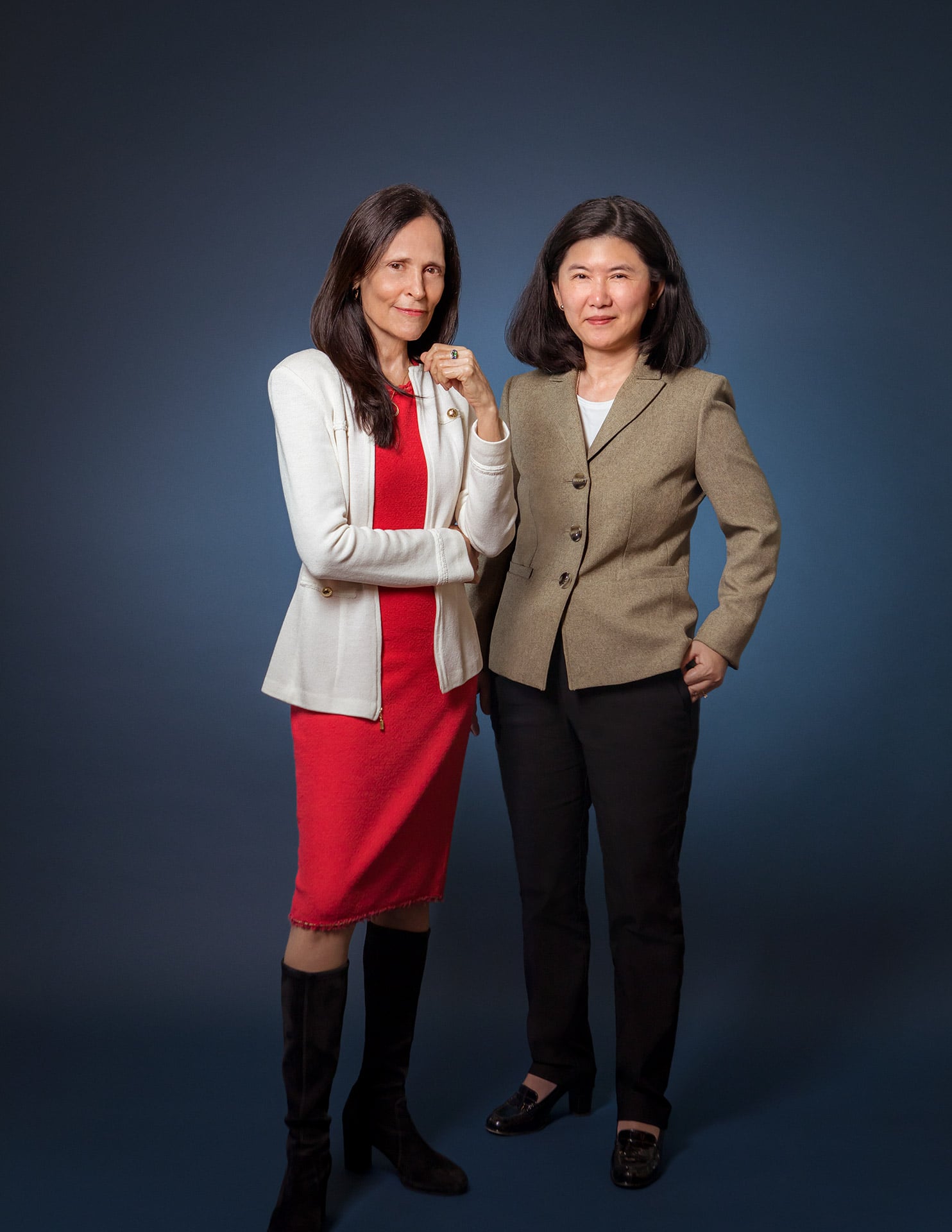
Is Miami becoming recognized as an innovation destination?
Along with the tech movement, we have seen increased interest in biomedical technology and startups in South Florida, which has led to heightened interest in Miller School research and innovation. The recent growth of biomedical startups in the Miami area is reflected in a lack of available wet lab space.
In terms of destination, the U Innovation offices are located in Converge Miami (formerly the UM Life Sciences and Technology Park), which was established through a partnership with Wexford Biosciences. Our vision is to have that area become the hub of an innovation district that connects with the medical school. Several UM biomedical startups have located in Converge, and the Miller School’s new medical education building breaking ground in Converge further cements our emergence as an innovation destination.
U INNOVATION LEADERSHIP
Brian Breslin, M.B.A
Director
The Launch Pad
Jeff Camp
Director
’Cane Angel Network
William Silverman, Ph.D., M.B.A. ’10
Executive Director
Coulter Program & New Ventures
Bob Williamson, M.B.A.
Entrepreneur-in-Residence
Bin Yan, Ph.D., J.D.
Director
Office of Technology Transfer
Envisioning a Better Way to Test and Improve Eyesight
Heru aims to revolutionize vision correction with diagnostic software based on AI technology developed at the Miller School
HERU
AI-driven vision care
www.seeheru.com
FOUNDED
2019
MILLER SCHOOL FOUNDER
Mohamed Abou Shousha, M.D., Ph.D.
STATUS
First product on the market
According to the World Health Organization, more than one billion people worldwide live with impaired vision because they do not get the testing and care needed to treat conditions like double vision, glaucoma and cataracts. Heru’s solution to this challenge uses patented technology that harnesses the power of artificial intelligence developed through extensive research at the Miller School’s Bascom Palmer Eye Institute.
Ophthalmologists and other eye care professionals can conduct eye exams using Heru’s re:Viv software paired with wearable headsets placed on the patient. The diagnostic services are delivered through highly portable, lightweight, responsive cloud applications. Dynamic reports are delivered in real time to any device, allowing the specialist to recommend corrective therapy more quickly and efficiently.
Heru is a clear-eyed example of the synergy between Miller School inventors and U Innovation, said the company’s founder and CEO, Mohamed Abou Shousha, M.D., Ph.D., associate professor of clinical ophthalmology. “I brought the idea for Heru to Dr. Norma Kenyon,” he said. “Under the direction of Dr. Bin Yan, the team at the Office of Technology Transfer guided us through the pathway to licensing the IP, spinning out the company from it and helping us find investors.”
In December, Heru’s technology platform received FDA registration for commercialization. The company has garnered nearly $33 million in funding from investors, including D1 Capital Partners, Furey Research Partners and SoftBank. With that capital, Heru is now collaborating with developers of next-generation augmented reality (AR) headsets. Its technology is compatible with off-the-shelf AR/VR headsets, including Microsoft and Magic Leap devices. The startup is also developing vision-augmentation software designed to correct vision defects in real time using AI.
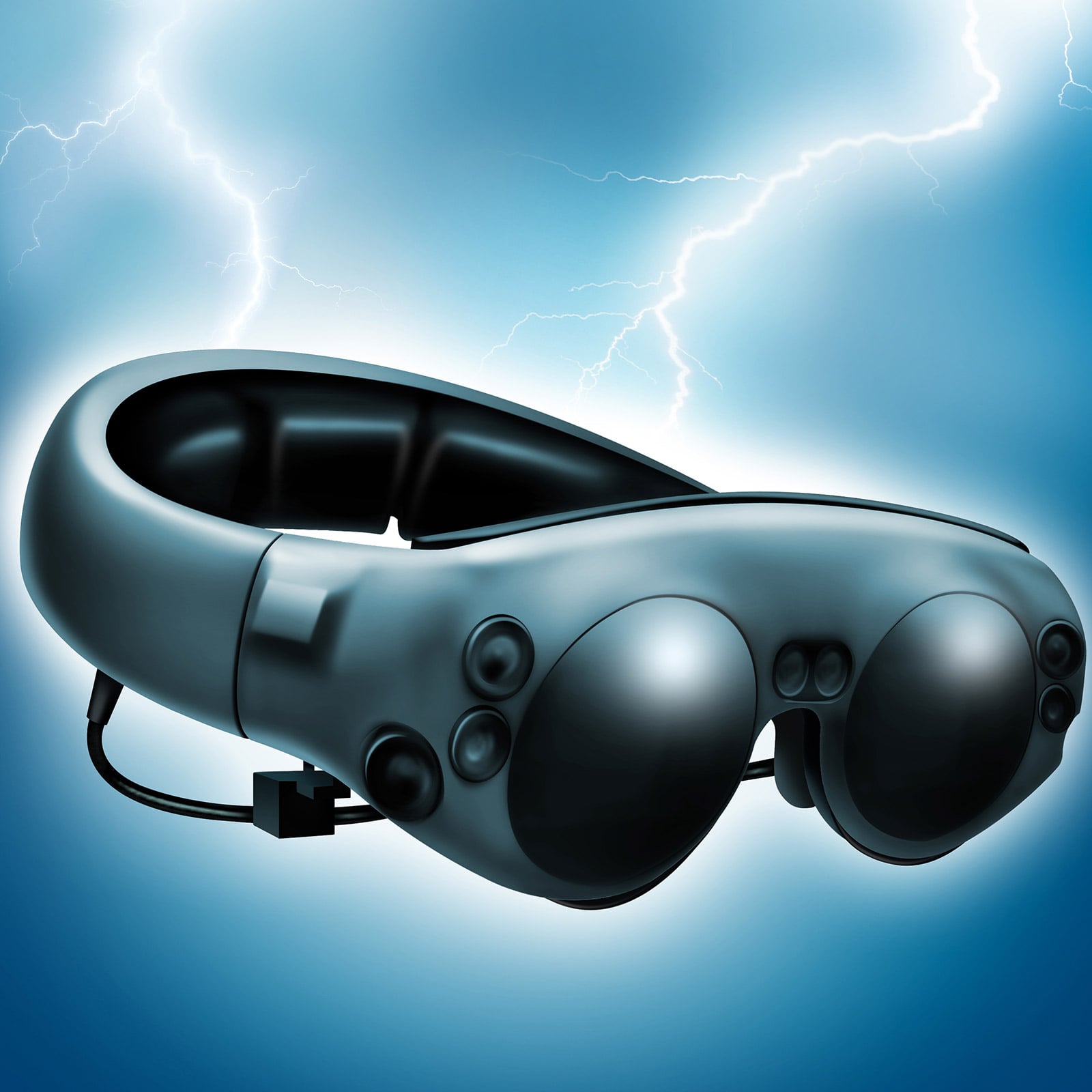
“I have a passion for helping more people lead better lives by improving their vision,” Dr. Abou Shousha said. “With the assistance received from Bascom Palmer Eye Institute and U Innovation, Heru is empowered to achieve that mission.”
Joining Forces to Treat a Rare Pediatric Disease
Two physician-scientists, after repurposing a drug and co-founding PriZm Therapeutics, are in discussions with investors to fund a clinical trial
PriZm Therapeutics
Ultra-rare pediatric orphan diseases
https://prizmtx.com
Founded
2020
Miller School Founders
Roy Weiss, M.D., Ph.D.
Rajkumar Hirani, Ph.D.
Status
Registration/Phase 3 Pivotal Trial enabling
Convincing investors to fund a biotech startup is a tricky business. Funders speak in financial terms, seeking information on how to gain a commensurate return on their investment. Entrepreneurs involved in the startup can articulate that language, too, but not necessarily the intricate science behind the company. Bridging that gap is critical, especially when the funding is for clinical trials to prove the efficacy of a desperately needed drug.
PriZm Therapeutics is a successful case study in this complex process. It traces back to 2006 and joint research pioneered by Roy Weiss, M.D., Ph.D., an endocrinologist and chair of the Miller School’s Department of Medicine, and Samuel Refetoff, M.D., Ph.D., a fellow endocrinologist and professor emeritus of medicine at the University of Chicago. They developed a first-in-class drug to treat Allan-Herndon-Dudley syndrome (AHDS), also known as monocarboxylate transporter 8 (MCT8) deficiency, a rare genetic disorder that only affects young boys, severely impairing their neurocognitive and physical development. There are several thousands of known cases worldwide, but as scientists learn more about the disease, they may be able to identify other affected children who are not immediately diagnosed.
Based on the absence of a cure for AHDS, Drs. Weiss and Refetoff were granted a compassionate use provision by the Food and Drug Administration to begin treating patients with the drug, SRW101, with the intention of conducting a clinical trial. In the meantime, their IP was licensed to PriZm Therapeutics, a startup launched by the scientific innovators and a team of medical and business experts. The dealings were facilitated by U Innovation, including its Office of Technology Transfer.
“To take a drug to clinical trials, there are many pieces of to the puzzle,” said Khemraj Hirani, Ph.D., M.B.A., a strategic and regulatory expert at the Miller School, associate vice chairman of research and regulatory compliance in the Department of Medicine, and a member of the PriZm team. “U Innovation provided not only the guidance but also plenty of collaborative support.”
“If all goes well, the drug should be on the market in about four years,” Dr. Hirani added.
While costly, clinical trials represent a fraction of the more than $2 billion typically needed to bring a drug to market. Funding is essential, and enlisting investors requires breaking that scientist-to-financier language barrier.
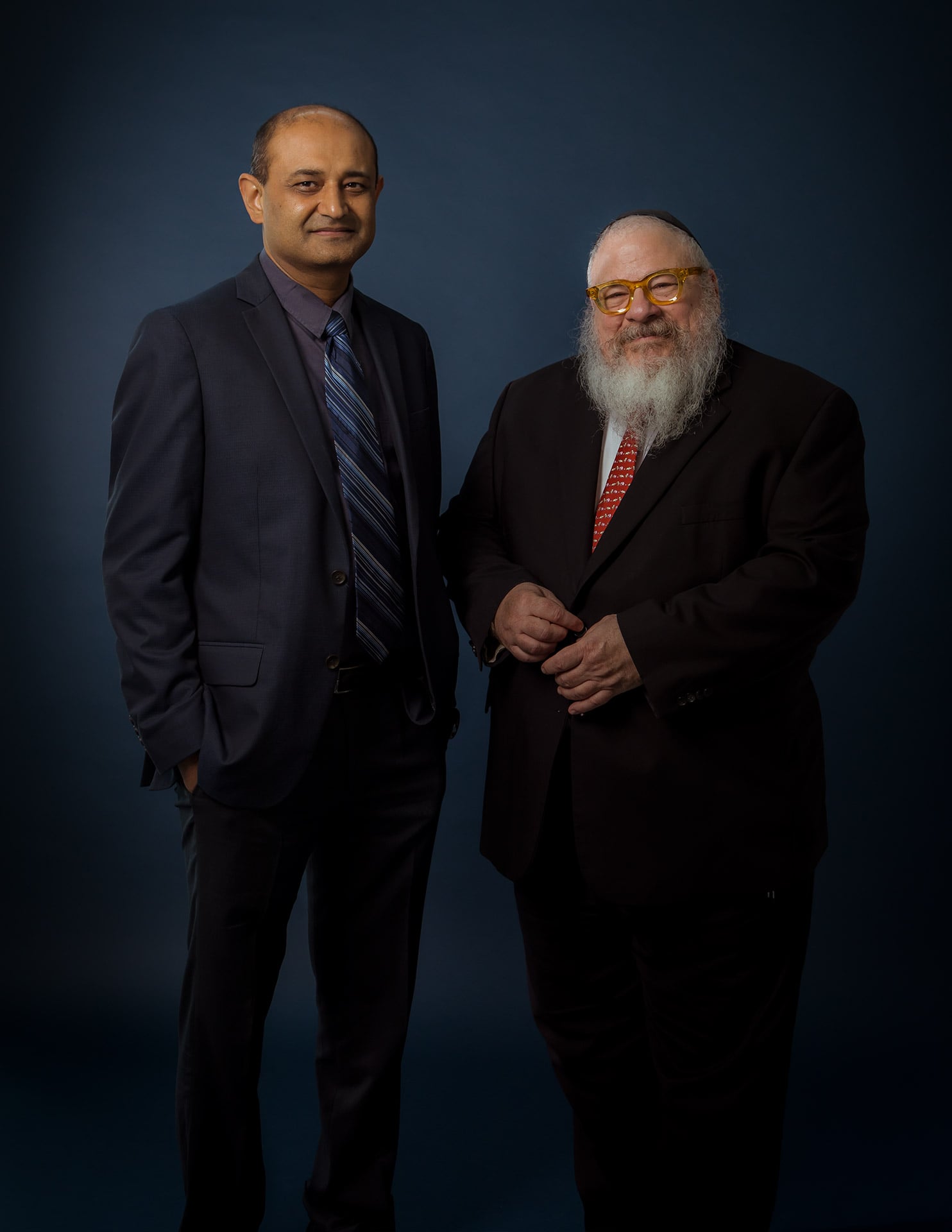
Drs. Khemraj Hirani (left) and Roy Weiss estimate PriZm Therapeutics’ drug may be on the market in four years
“As physician-scientists, we’re constantly communicating with our patients from all over the world,” Dr. Weiss said, “and when meeting with investors, we communicate in a very similar way. They want to hear directly from the doctors treating these patients, who know the disease and were involved in the preclinical and clinical studies done to date.”
At the same time, Dr. Weiss continues to receive feedback and hear from families of children with AHDS. “They’re all awaiting the drug’s availability,” he said.
Capitalizing on a Brainstorm
After refining an alternative catheterization procedure for neurosurgery, Dr. Eric Peterson developed a new catheter — and then sold it to a medical device giant
RIST Neurovascular
Catheter for brain surgery
https://www.medtronic.com
Founded
2018
Miller School Founder
Eric Peterson, M.D.
Status
Acquired by Medtronic
As the Miller School’s chief of endovascular neurosurgery, Eric Peterson, M.D., knows his way around the human brain. Getting there, however, used to sometimes be a challenge — not just for him, but for neurosurgeons in general. But with Dr. Peterson’s resourcefulness and entrepreneurial spirit, plus a critical lift from U Innovation, they have a new tool to use.
To treat aneurysms and other problems with the blood vessels of the brain, Dr. Peterson traditionally would insert a catheter into the large femoral artery in the thigh, then guide the catheter to the brain — a pathway that could be difficult to navigate. “We knew of an alternative access route, regularly used by cardiologists, through the radial artery in the wrist,” Dr. Peterson recalled. After researching the literature on the method, he concluded that “it is not just an alternative, but a better way of accessing the vessels for these procedures,” as well as producing better outcomes for patients.
y diagnosed.
Dr. Peterson began employing the method in the cath lab, but femoral catheters often proved inadequate to access the vascular network to the brain from a radial approach. Undaunted, in 2015 he came up with the idea of inventing a catheter specifically designed to access the blood vessels of the brain via the radial approach. That’s when he contacted U Innovation and ultimately received a $125,000 grant from its Coulter Center, which got him started on the design of the innovative device.
Once the design was complete, significant additional funding was needed to go from a prototype to a production-ready device that could achieve FDA clearance. Dr. Peterson spun out a startup company in 2018, RIST Neurovascular, and raised venture funding. With U Innovation’s support, he licensed the IP from UM. RIST completed the design of two different radial catheters and then submitted the catheters for FDA approval, which was received in 2020. In September 2020, two years after the company was founded, Medtronic, one of the world’s largest medical device companies, acquired RIST for an undisclosed amount, and the catheters are now marketed in the U.S., Canada and Europe.
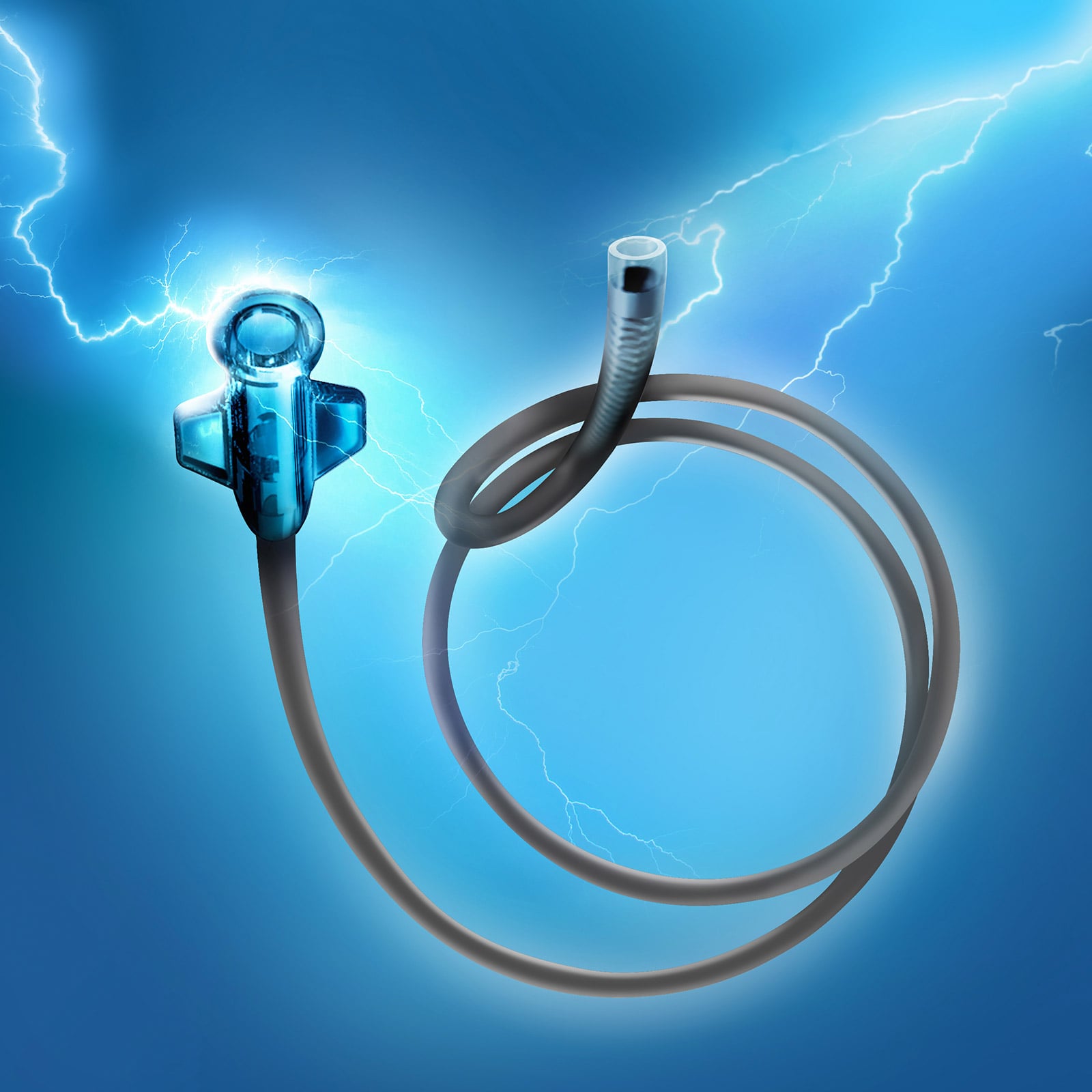
While Dr. Peterson continues his academic and neurosurgery pursuits, he’s been bitten by the entrepreneurship bug. “It was an amazing educational journey for me,” he said, “to peel back the layers of entrepreneurship, startups, strategics, negotiation, business development and venture capital. It really adds a whole new facet to your professional life. I will definitely be doing it again.”
Fighting Diseases on Two Fronts
ZyVersa Therapeutics was spun off of two different drug discoveries: one that reduces harmful inflammation and another that treats chronic kidney disease
ZyVersa Therapeutics
Inflammatory and renal diseases
https://www.zyversa.com
Founded
2014
Miller School Founders
Alessia Fornoni, M.D., Ph.D.
Helen Bramlett, Ph.D.
Juan Pablo de Rivero Vaccari, Ph.D.
W. Dalton Dietrich, Ph.D.
Robert Keane, Ph.D.
Status
Phase 2 ready for VAR 200 (Fornoni)
IND-enabling for IC 100 (Bramlett, de Rivero Vaccari, Dietrich, Keane)
ZyVersa typifies translational research, or what’s called the “bench to boardroom” process of bringing research and development to market. In this case, two novel drugs were developed by separate research teams at the Miller School, which, with the guidance of U Innovation, licensed the intellectual property to ZyVersa, a startup launched by scientists and entrepreneurs. The company is currently raising funds to conduct clinical trials, with the goal of receiving approval from the Food and Drug Administration.
Collaboration was the engine that powered the dual scientific efforts, as well as ZyVersa’s business operations, which feature two distinct scientific advisory boards.
“I’m the inventor of the drugs being developed by ZyVersa to treat patients with kidney diseases, and licensed to ZyVersa,” said Alessia Fornoni, M.D., Ph.D., a professor of medicine and chief of the Katz Family Division of Nephrology and Hypertension at the Miller School, and a Scientific Advisory Board member of ZyVersa. “My goal is to cure chronic kidney disease and prevent the need for dialysis or kidney transplantation in affected patients.”
Dr. Fornoni has been a prolific innovator at UM since 2005 and has engaged with U Innovation since 2012. “Dr. Kenyon has been fantastic in building an environment and culture for innovation,” she said. “I’m a true believer that without commercialization of our inventions, there will no future innovation” in the treatment of kidney diseases.
Robert W. Keane, Ph.D., is a professor of physiology and biophysics, The Miami Project to Cure Paralysis, and the Department of Microbiology and Immunology at the Miller School. His advisory role differs from Dr. Fornoni’s, as he is involved in ZyVersa’s ongoing drug research to treat inflammatory conditions, including brain and spinal cord injury, multiple sclerosis and Alzheimer’s disease.
Dr. Keane’s neurosurgical research colleagues from The Miami Project to Cure Paralysis include Juan Pablo de Rivero Vaccari, Ph.D., M.S.B.A; Helen M. Bramlett, Ph.D.; and W. Dalton Dietrich, Ph.D., scientific director of The Miami Project. With funding from U Innovation’s Coulter Center and a combined phase I and phase II STTR from the National Institutes of Health, they developed a drug that inhibits inflammasomes, master regulators of inflammation, and formed InflamaCORE, LLC, which licensed that IP from UM; ZyVersa then licensed that IP from InflamaCORE.
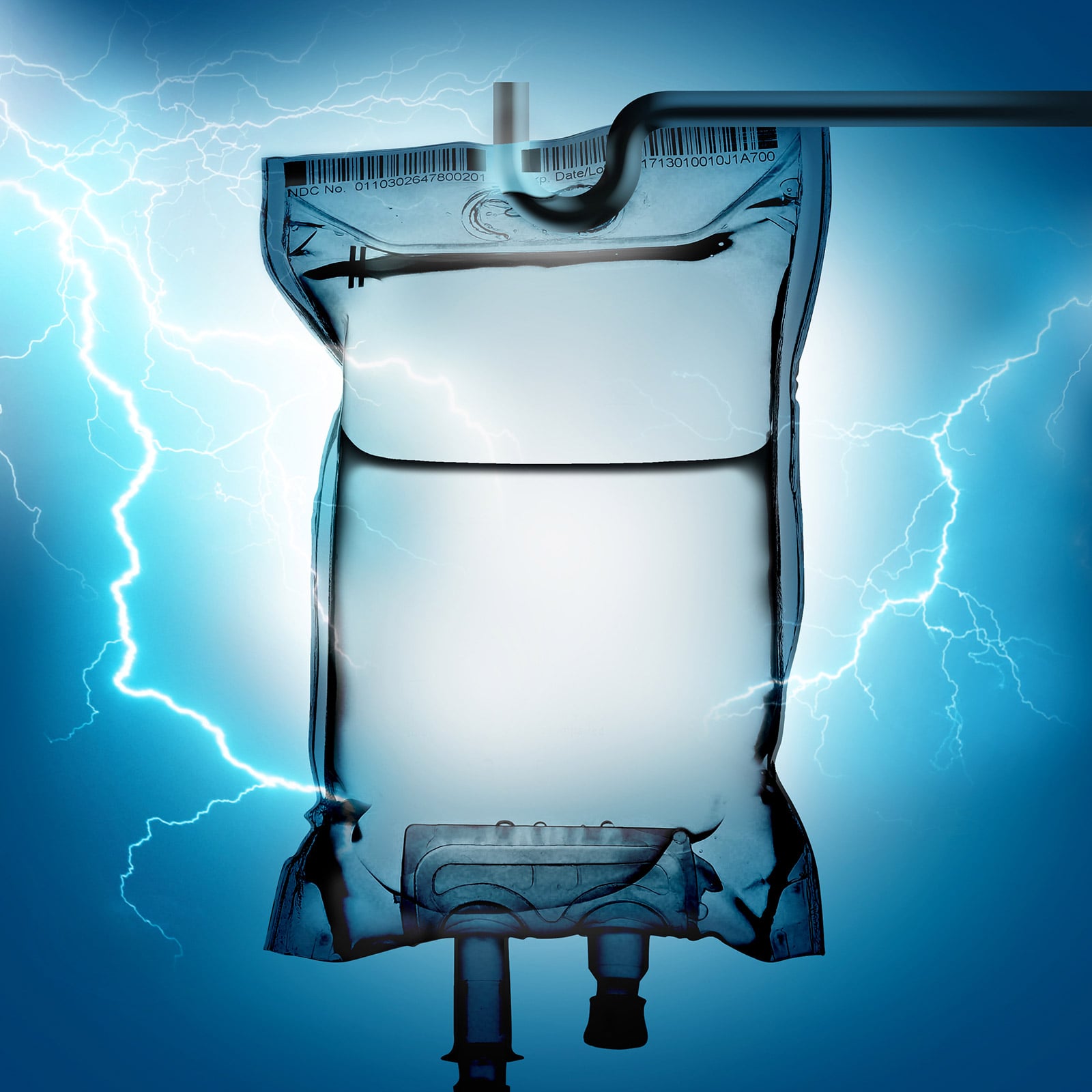
“I’m also consulting with the manufacturers of the drug, as well as providing my knowledge of the drug and the inflammasome to potential investors in order to take the company public,” Dr. Keane said.
The science part of Dr. Keane’s role stems from his years of research in academia, though the business aspects “are totally different from teaching medical students,” he admitted. “I’ve learned what’s needed to obtain funding to take the project forward and to collaborate with different business experts. It’s been an educational experience.”
Generating a Growth Business
Ambulero’s biotech therapy platform is a significant breakthrough in the treatment of vascular disease
Ambulero
Regenerative cell and gene therapies
https://www.ambulero.com
Founded
2019
Miller School Founders
Omaida Velazquez, M.D.
Zhao-Jun Liu, M.D., Ph.D.
Status
Preclinical, received Orphan Drug Designation
Vascular disease comprises an array of abnormal conditions that block circulation of blood through the body, a major contributor to stroke, heart attack, peripheral arterial disease (PAD), non-healing wounds, leg amputations and kidney failure. Claudication, or leg pain with walking from poor circulation, is a common manifestation of PAD that in some people may progress to chronic limb-threatening ischemia (CLTI), unrelenting pain and ultimate tissue death by gangrene.
The root causes of these and other vascular diseases are damaged, inflamed and/or occluded vasculature. Omaida C. Velazquez, M.D., F.A.C.S., chair and professor of surgery, and Zhao-Jun Liu, M.D., Ph.D., associate professor of surgery, have spent years studying how to regrow blood vessels, and have developed vascular regenerative cell and gene therapies that are the foundation of their startup company, Ambulero.
“We discovered a new function for the cell adhesion molecule called E-selectin, which when in its membrane-bound form is pivotal to the processes of stem cell homing, healing, vascular regeneration and restoration of blood flow to compromised tissue,” Dr. Velazquez explained.
Added Dr. Liu: “It’s been a long journey to reach this novel angle in the field of gene and stem cell therapy for vascular applications.”
Another journey began when they connected with U Innovation’s Coulter Center, which assisted them in filing for a patent and provided funding that led to the launch of Ambulero.
“U Innovation’s work behind the scenes has been critical in showcasing our science to entrepreneurs and investors,” Dr. Velazquez said. “We are experts in the science and the unsolved clinical problems, but the road map from preclinical discovery to clinical translation is a new, uncharted territory for us.”
The Coulter Center and Office of Technology Transfer took Drs. Velazquez and Liu through the process with education, outreach, meetings and guidance.
“This could have never happened without a strong U Innovation office and the great people Dr. Kenyon has put in place to support UM principal investigators,” Dr. Liu said.
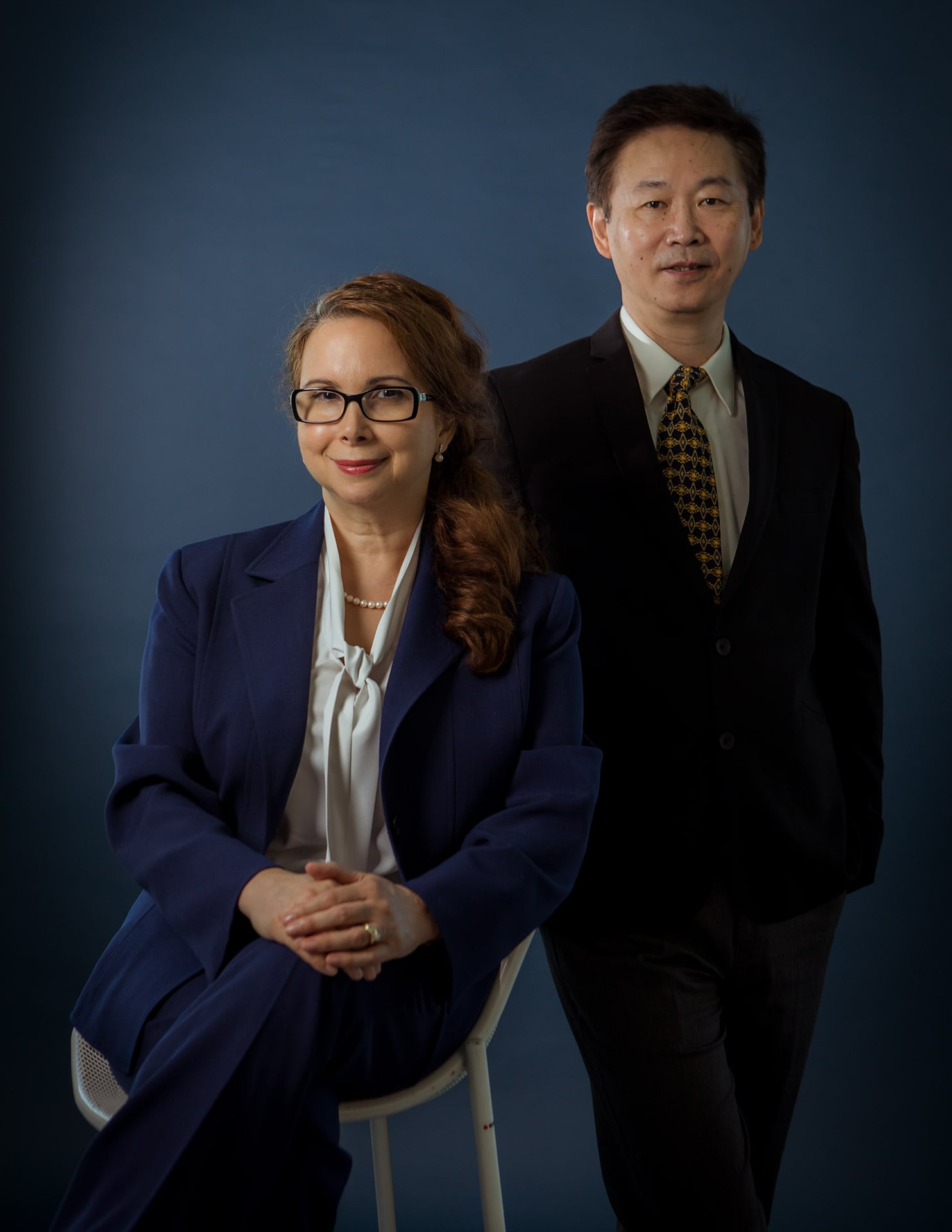
Drs. Omaida Velazquez (left) and Zhao-Jun Liu call Ambulero’s startup “new, uncharted territory for us.”
The collaborative efforts are paying off for Ambulero: In October, the Food & Drug Administration granted orphan drug status for its gene therapy candidate, AMB-301, to treat Buerger’s disease, a highly debilitating vascular disease that can lead to severe limb damage and amputation, often occurring in relatively young patients. There are no effective treatments, making any new therapies critically important.![]()



